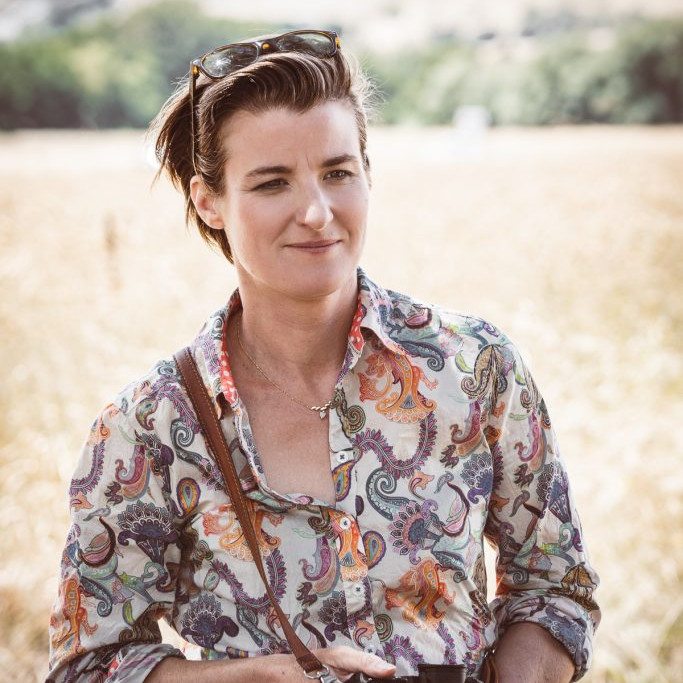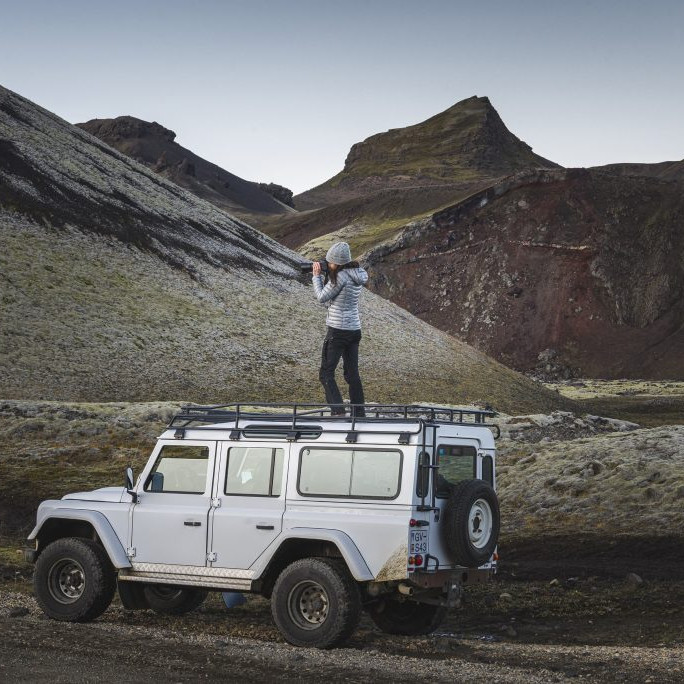David Leaser Photography
Tell us about your visit to the Huntington Library, Art Collection and Botanical Gardens in California and how it lead you to travel to South America?
After completing the photographic essay, Tropical Gardens of Hawaii, I spent a day at the Huntington Library, Art Collections, and Botanical Gardens in California. The Huntington was featuring an exhibit of paintings from Frederic Church, one of my favourite 19th century artists. When I left the exhibit, I went into the affinity bookstore they had set up and I saw my book, “Palm Trees: A Story in Photographs.” It made me think, “why not go to South America and see if I can retrace Frederic Church’s footsteps and photograph the sites he had painted.” So, I hopped on a plane and went to Ecuador, where I spent about two weeks in the Amazon and then in the Andes.
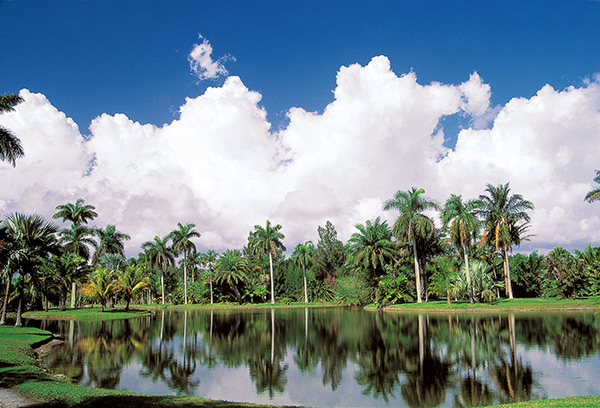
Fairchild Tropical Botanic Garden outside Miami, Florida.
You said that you were “struck by the tiniest flowers on the rainforest floor”. Can you expand on this statement?
You know, most people were taken by the raucous parrots, giant tree sloths and the like, but I started to turn my attention to the overlooked parts of the rainforest. I was first fascinated with the leafcutter ants, but then I started looking at these tiny flowers that we had been stepping upon. At such a small scale, they seemed insignificant, but each small flower contained its own ecosystem for the small insects and reptiles.

Senecio – this is the size of a thumb nail.
I had an epiphany: Why not show viewers the most intricate, intimate workings of the tiniest of flowers and elevate their status. When I returned to Los Angeles, I set up a studio to photograph flowers – some of them smaller than your fingernail – and then enlarge them enormously to show them to people in a way they have never seen them before.
I struggled for a long time to master the technique, but through much trial and error, I figured it out. In fact, my technique was just featured by Nikon in their quarterly magazine. The issue is Fall 2012 Edition of Nikon World.
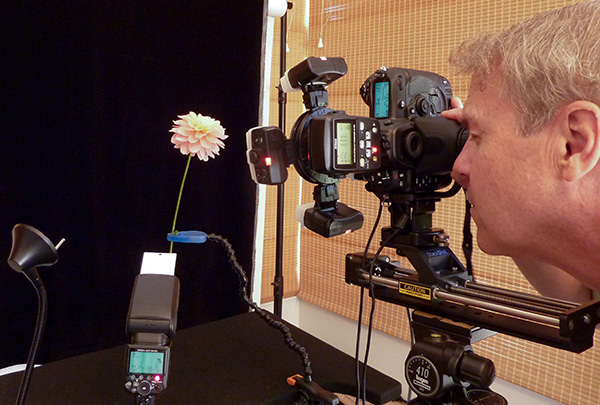
David Leaser , with Nikon macro setup.
When we look at images like “Rococo” it is not only the flower but the black background that transports us back to the Flemish School and 1500’s is this your intention?
You picked up on that! Yes, I have always appreciated the works of botanical artists like Ambrosius Bosschaert and Rachel Ruysch and the way they isolated their botanical subjects against a black background. I’ve taken in a step further and decontextualized them even more so you are really drawn into the complexity of the flower with no distraction. I’ve been told by art critics the work is very modern because of the black backgrounds, but actually it is a return to style of the Flemish school. I think the work is equally at home in a modern setting as it is in a traditional one.

Rococo.
Do you always use either black or white backgrounds. How do you decide?
I belabor every aspect of these works, including the backgrounds, and it really depends on the flower.
I am trying to give these flowers a “Hollywood portrait” treatment, so I test the flowers against multiple colors. Some look amazing against white, and others against black. Each flower really makes the call.

Fuchsia The Queen Paphiopedium Orchid
Most of your floral photographs are done in your studio. Can you explain (very simply) your technique?
I developed a process that combines macro photography with some revolutionary equipment and software, some of which was used by NASA on Mars. Most of my images are actually composites of multiple photographs of the same flower, each with a different focal point. I then sandwich the images together to create a highly detailed image. I can then selectively de-focus certain areas to direct your eye where I think it should go, typically to the most interesting part of the flower. My studio looks like a mini studio you would find for glamour photography, with light boxes, high powered strobes and seamless backgrounds.
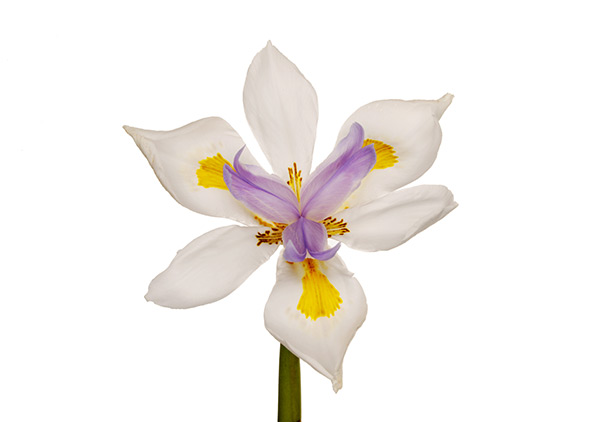
Fortnight Lily.
Where do you get your flowers from, especially the exotic ones?
I am fortunate to live in Southern California, where we can grow most anything. And we have the Los Angeles Flower Mart, which houses more than a city block’s worth of flower vendors. I make regular trecks to the flower mart and spend hours looking for the perfect flowers. But that only goes so far. We also have a greenhouse in our back yard to grow exotics. My wife and I pour through mail-order catalogs and plant hundreds of rare flowers each year. You’d be surprised to know that often the ones that seem like winners do not photograph well, and others we thought were too plain show up beautifully in photographs. They’re a lot like people, I guess.
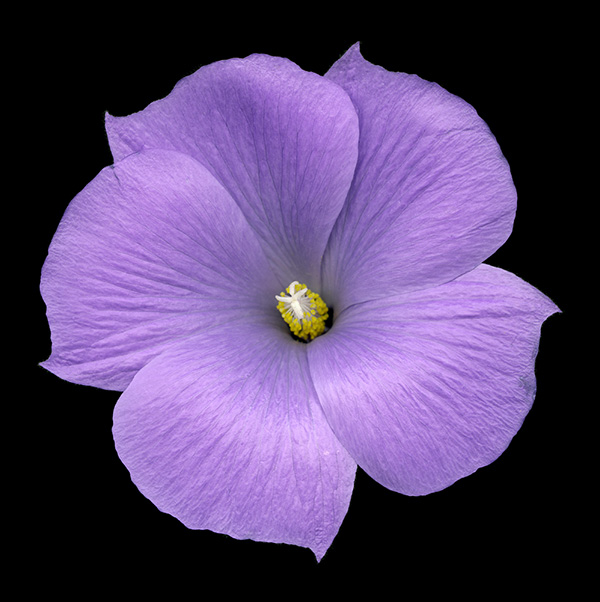
Masquerade.
What type of camera do you use?
I use digital Nikon cameras, lenses and flash units exclusively. I find Nikon equipment to be rugged and easy to use, and their lenses are unmatched for sharpness. I am presently using a Nikon D3X body with Nikon macro lenses. I also use Nikon’s Close up Lighting System and Elinchrom strobe lights. To capture these images, you need to introduce an enormous amount of light, which can sometimes cause the flowers to wilt!
Many of the prints go beyond floral, to pattern. Do you manipulate the plant to gain this?
No. Although I am not striving for photo journalism, I’ve found I really need to do very little with the actual flowers to create a great image, aside from laboring over how to position them in front of the camera. I intentionally pick flowers which do have a unique structure, and then photograph from many angles. My image, Tiger’s Eye, is a perfect example. I had photographed it multiple times in a standard pose and it looked very average. Then I decided to look right into the flower the way a hummingbird or bee would. The result is a flower image that staircases you to the center because of its unusual patterns.

Miyazaki – Toad Lily.
The printing of your photographs come in different formats, Collector’s edition prints and smaller Silver Editions, can you explain about these?
Every aspect of my work is archival and museum quality, down to the media and framing materials I use. The Collector’s and Silver Editions are printed on archival canvas with archival inks by, what I believe to be, the best art canvas printing house in the United States. By printing on canvas, the viewer can see the image without the interference of a pane of glass. I also offer these images on archival paper and also in a unique format using specially treated aluminum, where the image is actually infused right into the metal. It’s a modern take on the Daguerreotype. My work is only available in limited editions to help protect their value for collectors.
In simple terms can you explain what dettagli process is?
An art critic in New York called my work dettagli because it captures detail like you’ve never seen before. You can literally see grains of pollen on the stamens of a hibiscus and the hairs on the stems of an orchid. The process really starts with my initial photography, which is extremely sharp. Then, by stacking together multiple images that are sharp in different areas, I can achieve an image with complete sharpness from corner to corner. But the reproduction must be flawless. My canvasses are the highest quality, and they are coated with gesso to make them smooth and luminous. The pigment is applied and the image is them coated with a UV coating to add a bit of depth. Finally, I intentionally frame images with black backgrounds with black frames to draw your eye to the centre of the canvas, creating a stronger sense of depth.
Exhibition details
My work has been exhibited in museums and galleries around the world.

Tigers Eye
Tiger’s Eye was selected to appear at the London Art Biennale at the Chelsea Old Town Hall in January 2013. Eleven images are in the permanent collection of The Huntington Library, Art Collections, and Botanical Gardens in California. The Nightflowers collection was awarded a silver medal at the International Photography Awards. More than 8,000 submissions from 90 countries competed in the Awards, the largest to date. The work was juried to be featured in Architectural Digest’s exclusive home design show.
Gallery details
The work can be viewed in my online gallery at http://davidleaser.com/ where a list of art galleries featuring the work is also posted.
Contact details
DAVID LEASER FINE ART
12021 Wilshire Boulevard,
Los Angeles, California 90025 USA
Email: david@davidleaser.com
Publication details
My work has been featured in major publications, including the Los Angeles Times, Nikon World and Architectural Digest. I have also authored four books featuring my photography, including two photographic essays, “Palm Trees: A Story in Photographs,” and “Tropical Gardens of Hawaii.”
“I recommend Huntington Library, Art Collection and Botanical Gardens in California, to anyone going to LA.
This is a must visit.” Deborah Blakeley
Website: http://www.huntington.org
David Leaser, Los Angeles, USA
Interview by Deborah Blakeley, December, 2012
Think a colleague or friend could benefit from this interview?
Knowledge is one of the biggest assets in any business. So why not forward this on to your friends and colleagues so they too can start taking advantage of the insightful information the artist has given?
Other artists you may be interested in:



